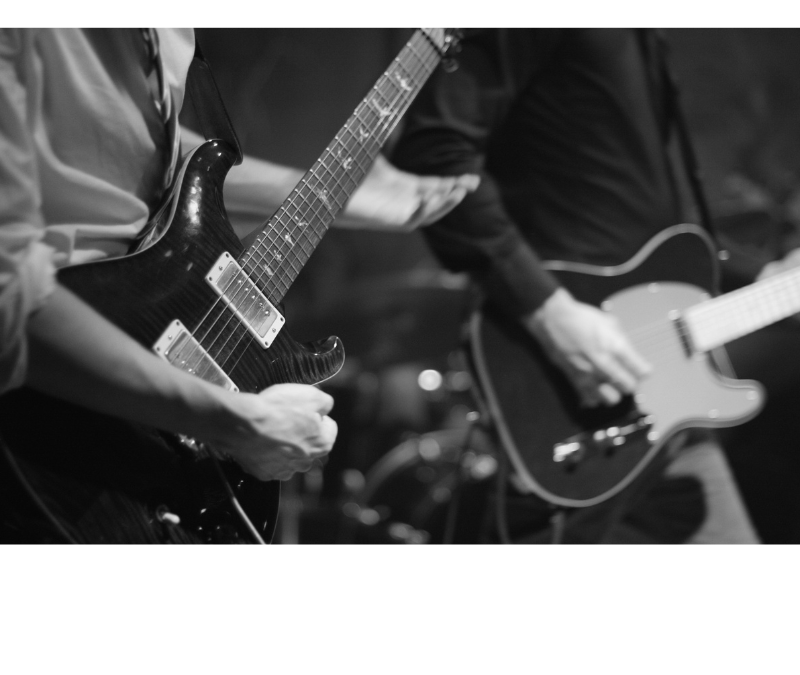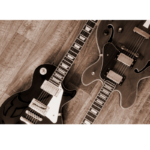Learning to play the guitar can be one of the most rewarding experiences for any music enthusiast. One of the foundational elements of playing guitar is mastering chords. If you’re a beginner, starting with guitar chords easy to learn will set you on a path to playing your favorite songs in no time. In this blog post, we’ll explore how to play guitar chords in specific keys, understand chord progressions, and effectively use major and minor chords.
Understanding Guitar Chords Easy
Guitar chords are groups of notes played together to create harmony. They form the backbone of most songs, and learning them will enable you to play a wide variety of music. Chords are typically played by pressing down on the strings at specific frets with your left hand (if you’re right-handed) while strumming with your right hand.

Download The FretDeck & Chord Secrets Course!
Download Course
The Basics: Major and Minor Chords
The most common and fundamental chords are major and minor chords. Major chords have a happy, bright sound, while minor chords tend to sound sadder or more melancholic.
Easy Major Chords
- C Major (C)
- Place your ring finger on the 3rd fret of the 5th string (A string).
- Place your middle finger on the 2nd fret of the 4th string (D string).
- Place your index finger on the 1st fret of the 2nd string (B string).
- Strum from the 5th string down.
- G Major (G)
- Place your middle finger on the 3rd fret of the 6th string (E string).
- Place your index finger on the 2nd fret of the 5th string (A string).
- Place your ring finger on the 3rd fret of the 2nd string (B string).
- Place your pinky finger on the 3rd fret of the 1st string (high E string).
- Strum all the strings.
- D Major (D)
- Place your index finger on the 2nd fret of the 3rd string (G string).
- Place your middle finger on the 2nd fret of the 1st string (high E string).
- Place your ring finger on the 3rd fret of the 2nd string (B string).
- Strum from the 4th string down.
Easy Minor Chords
- A Minor (Am)
- Place your index finger on the 1st fret of the 2nd string (B string).
- Place your middle finger on the 2nd fret of the 4th string (D string).
- Place your ring finger on the 2nd fret of the 3rd string (G string).
- Strum from the 5th string down.
- E Minor (Em)
- Place your middle finger on the 2nd fret of the 5th string (A string).
- Place your ring finger on the 2nd fret of the 4th string (D string).
- Strum all the strings.
- D Minor (Dm)
- Place your index finger on the 1st fret of the 1st string (high E string).
- Place your middle finger on the 2nd fret of the 3rd string (G string).
- Place your ring finger on the 3rd fret of the 2nd string (B string).
- Strum from the 4th string down.
Playing Chords in Specific Keys
A key is a group of chords that sound good together and are derived from the same scale. Learning chords in a specific key allows you to play songs that are harmonically consistent.
The Key of C Major
The key of C major is a great starting point for beginners because it contains no sharps or flats.
Chords in the Key of C Major:
- C Major (C)
- D Minor (Dm)
- E Minor (Em)
- F Major (F)
- G Major (G)
- A Minor (Am)
Example Chord Progression in C Major
A common progression in C major is the I-IV-V-I progression:
- C (I)
- F (IV)
- G (V)
- C (I)
The Key of G Major
The key of G major is another popular key for beginners.
Chords in the Key of G Major:
- G Major (G)
- A Minor (Am)
- B Minor (Bm)
- C Major (C)
- D Major (D)
- E Minor (Em)
Example Chord Progression in G Major
A popular progression in G major is the I-V-vi-IV progression:
- G (I)
- D (V)
- Em (vi)
- C (IV)
The Key of D Major
The key of D major introduces a few new chords but remains fairly simple.
Chords in the Key of D Major:
- D Major (D)
- E Minor (Em)
- F# Minor (F#m)
- G Major (G)
- A Major (A)
- B Minor (Bm)
Example Chord Progression in D Major
A frequently used progression in D major is the I-vi-IV-V progression:
- D (I)
- Bm (vi)
- G (IV)
- A (V)
Using Chord Progressions: Guitar Chords Easy
Chord progressions are sequences of chords played in a specific order, forming the harmonic foundation of a song. Understanding how to create and use chord progressions will allow you to play a wide variety of songs and even create your own music.
Major Chord Progressions
Major chord progressions often sound happy and upbeat. Here are some common major chord progressions:
- I-IV-V-I Progression
- Example in C Major: C – F – G – C
- Example in G Major: G – C – D – G
- I-V-vi-IV Progression
- Example in C Major: C – G – Am – F
- Example in G Major: G – D – Em – C
Minor Chord Progressions
Minor chord progressions often have a more somber or reflective tone. Here are some common minor chord progressions:
- i-iv-v-i Progression
- Example in A Minor: Am – Dm – Em – Am
- i-vi-III-VII Progression
- Example in E Minor: Em – C – G – D
Combining Major and Minor Chords
Combining major and minor chords within a progression can add emotional depth and variety to your music. Here are a couple of examples:
- I-vi-IV-V Progression
- Example in C Major: C – Am – F – G
- vi-IV-I-V Progression
- Example in G Major: Em – C – G – D
Tips for Practicing Guitar Chords Easy
- Start Slow: Begin by playing each chord slowly and clearly, ensuring each note rings out without buzzing or muting.
- Use a Metronome: Practice changing chords in time with a metronome to develop your timing and rhythm.
- Chord Transitions: Focus on transitioning smoothly between chords. Practice switching between two chords until you can do it seamlessly, then add a third chord, and so on.
- Finger Placement: Ensure your fingers are pressing down on the strings just behind the frets to avoid buzzing.
- Strength and Flexibility: Build finger strength and flexibility with regular practice. Finger exercises can also be helpful.
Conclusion
Learning guitar chords easy to play is a fantastic starting point for any aspiring guitarist. By mastering basic major and minor chords and understanding how to play chords in specific keys, you’ll be well-equipped to tackle a wide range of songs. Experiment with chord progressions to discover the endless possibilities for creating music. Remember to practice regularly, be patient with your progress, and most importantly, have fun making music with your guitar. Happy strumming!

Download The FretDeck & Chord Secrets Course!
Download Course










